“In the Roundhouse, the UFO, and the Middle Earth Club in London everyone seems to get it, and it’s as if we are all in on the same joke”
– Andy Summer on London’s UFO Club
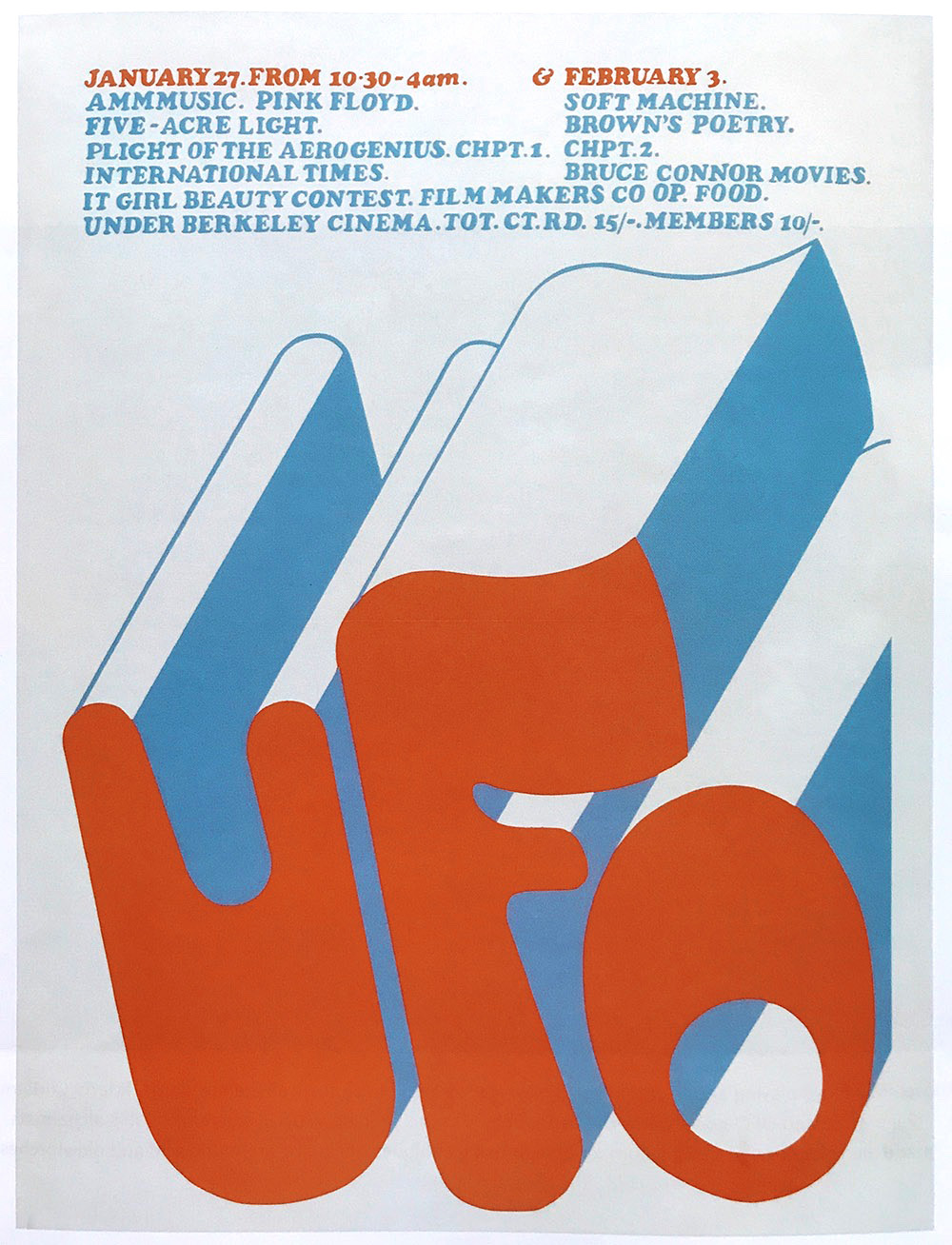
Founded by Joe Boyd and John Hopkins, London’s psychedelic UFO Club was small and short-lived, running for less than a year (23 December 1966 to October 1967). Born when the The International Times launched party at the Roundhouse on October 14, 1966 – a do that featured music from Pink Floyd and Soft Machine – the UFO operated from the basement at 31 Tottenham Court Road beneath the Gala Berkeley in London’s West End. Open “10:30 until dawn”, an (optimistic) year membership was 15 shillings but “Overseas visitors need not be members”. But punters all had to get back shaggy-headed figure of Mick Farren on the door.
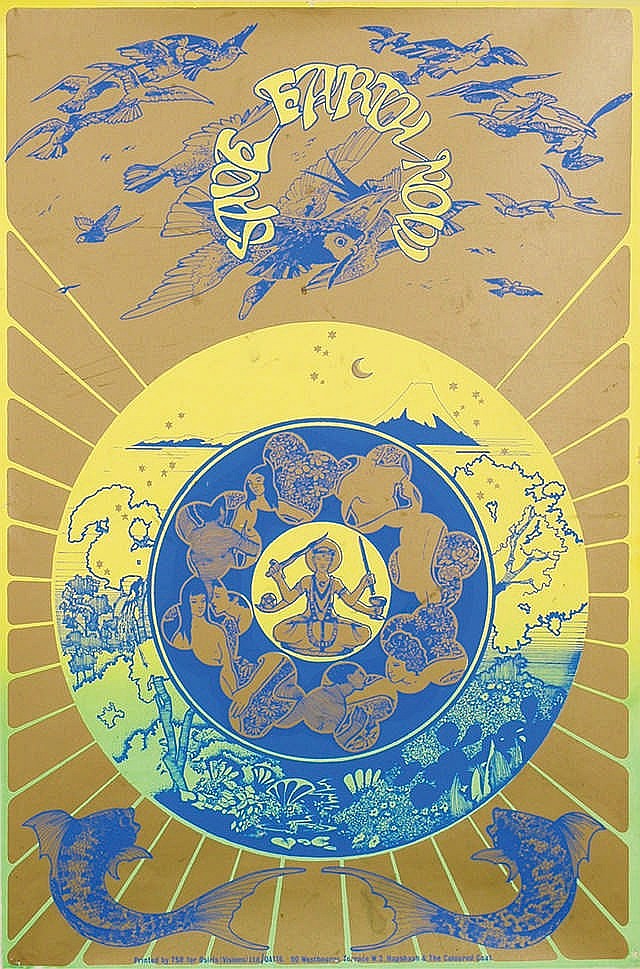
Once inside, the music soared. The house band was the Syd Barrett-era Pink Floyd, with The Move, The Pretty Things, Graham Bond, The Crazy World of Arthur Brown, Soft Machine, Denny Laine, Fairport Convention, Jimi Hendrix, Eric Burdon and The New Animals, Dantalion’s Chariot (with Zoot Money and future Police guitarist Andy Summers), The Bonzo Dog Band, The Smoke, Third Ear Band, Jeff Beck, Ten Years After, and (Giant) Sun Trolley.
The film club shows movies from the likes of Buñuel, Dali, W.C. Fields, Marilyn Monroe and Kenneth Anger) and light shows by Mark Boyle and Joan Hills). Food was of the vegetarian, macrobiotic strain and drugs swayed towards LSD.
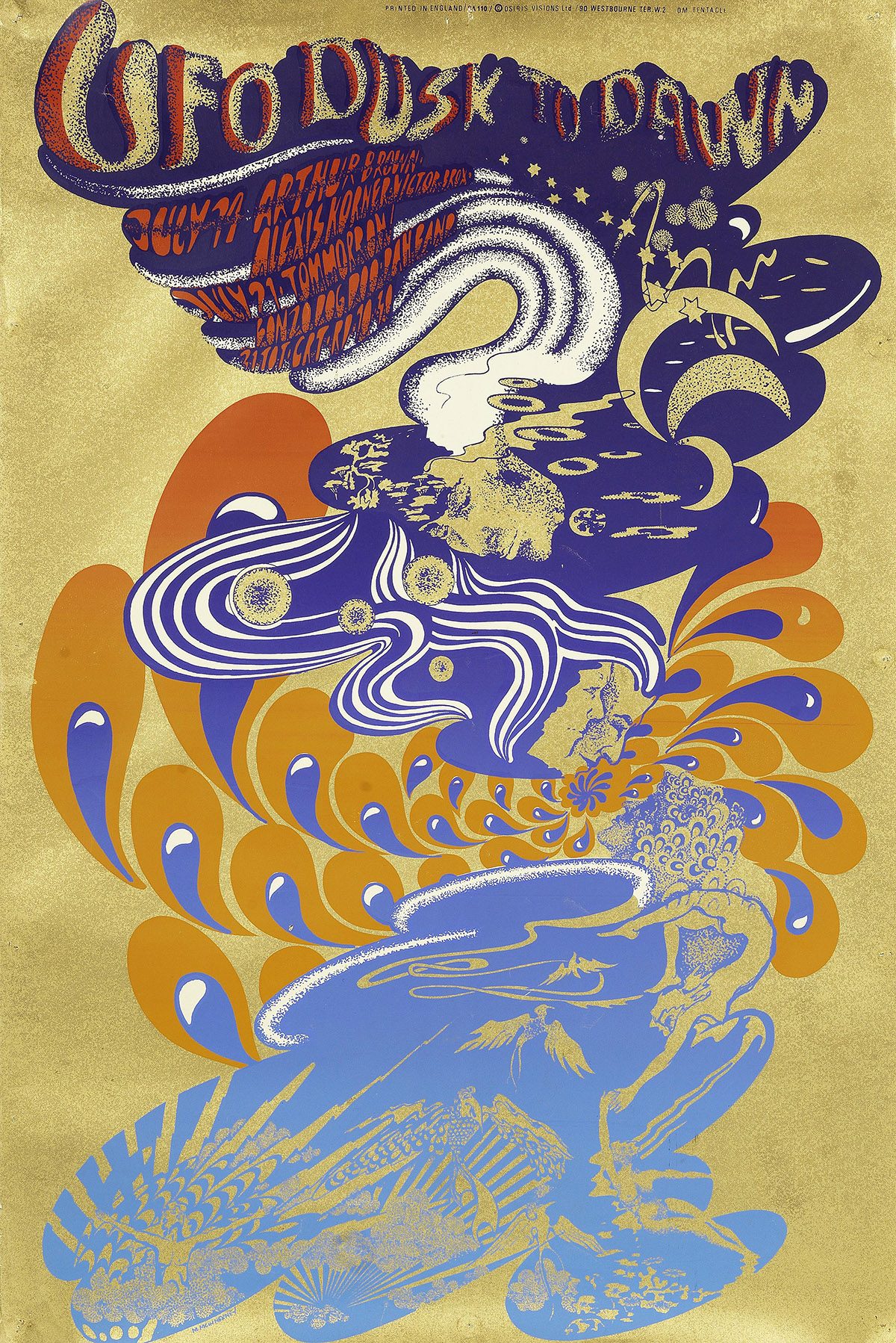
Andy Summers was there. In his autobiography One Train Later, the musician who before his stint with The Police played with a number of British acid rock and rock and roll acts, tells us:
In the Roundhouse, the UFO, and the Middle Earth Club in London everyone seems to get it, and it’s as if we are all in on the same joke. Our music expresses the release, the dropping of old conventions, the newly found freedom – and to play old-style R&B in these places would be distinctly uncool.
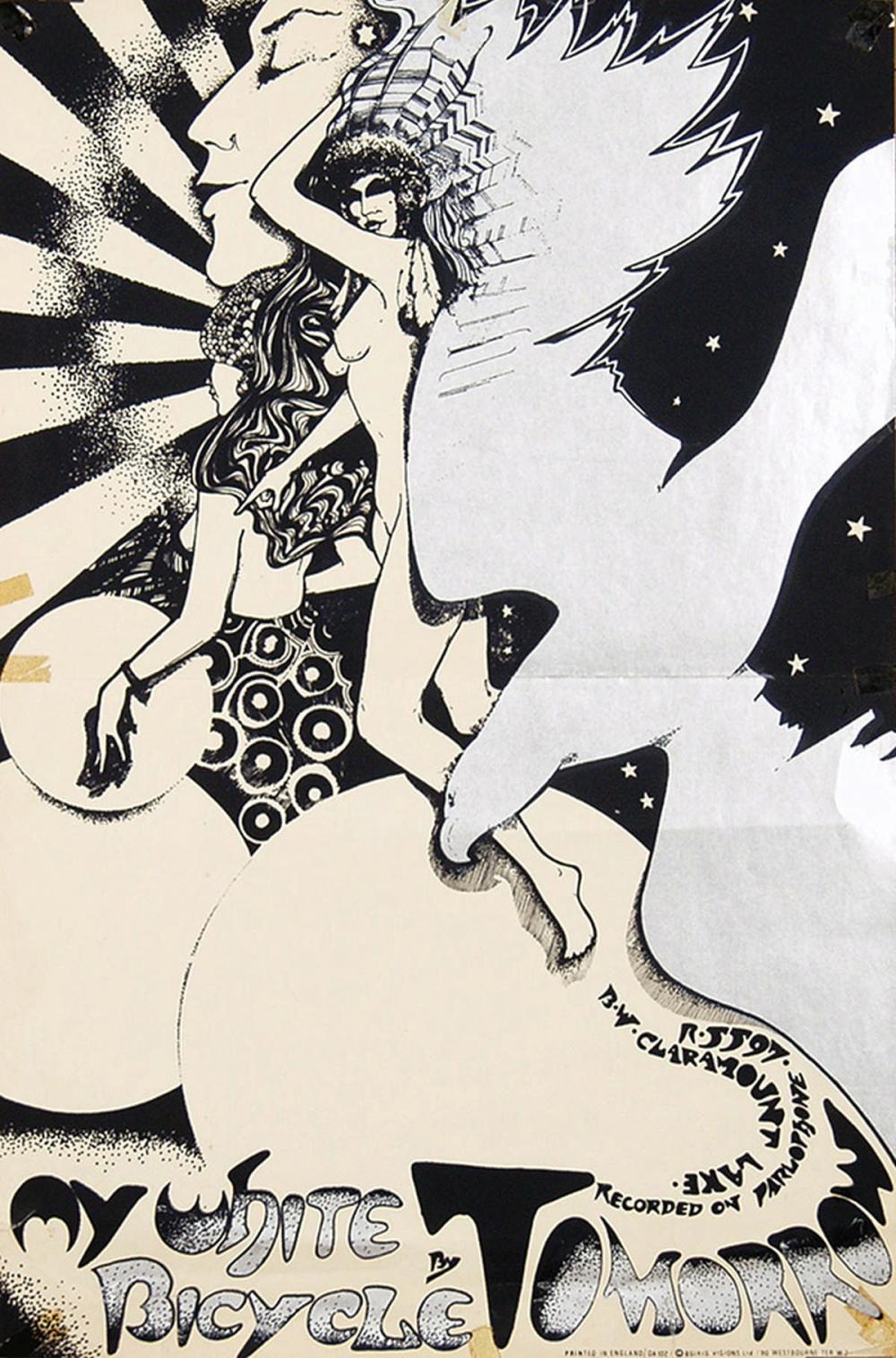
Many people were alerted to the UFO via its bright fly-posters of kaleidoscopic colour, wavy typography and mythical beings produced by artists Michael English and Nigel Waymouth, better known as Hapshash & the Coloured Coat.
“It was an accident,” Waymouth told BBC Designed. “It was originally supposed to be ‘Hatsheput’, based around the idea of Queen Hatsheput, one of the most powerful women in Egypt who ruled as king… We thought, ‘What a funny idea’, and then got inspired by the biblical story of Joseph and his coloured coat. We wanted a name that people would pay attention to.”
The pair had met in 1966 working on murals for groovy London fashion store English at Hung On You and Waymouth’s fabulous Granny Takes A Trip on Kings Road, the shop patronised by the likes of Mick Jagger, Brian Jones, Ronnie Wood, Rod Stewart, Andy Summers, The GTO’s Miss Pamela, Marianne Faithfull, and Anita Pallenberg.

Bob Hyde : pink swirls advert for the UFO Club – by Michael English (1941-2009) – 1967
Hapshash’s posters were influenced by Aubrey Beardsley, Dada, the 1890s and Art Nouveau. They were said to have been designed to be only understandable by those who took the time to stop and read them – were printed by Osiris Visions in the city’s Indica Gallery (owned by Marianne Faithfull’s husband John Dunbar, Peter Asher, and IT editor Barry Miles and heavily invested in by Paul McCartney), in the basement of the Indica Bookshop.
“Our designs had a startling effect on the fly-posters of London,” recalls Waymouth. “I’ve often described a block of 20 to 30 posters of a single one of our designs as a ‘powerful visual shock’… We were never busted, not like some. I do put it down to the fact that [the posters] were so detailed, yet pretty to look at.”
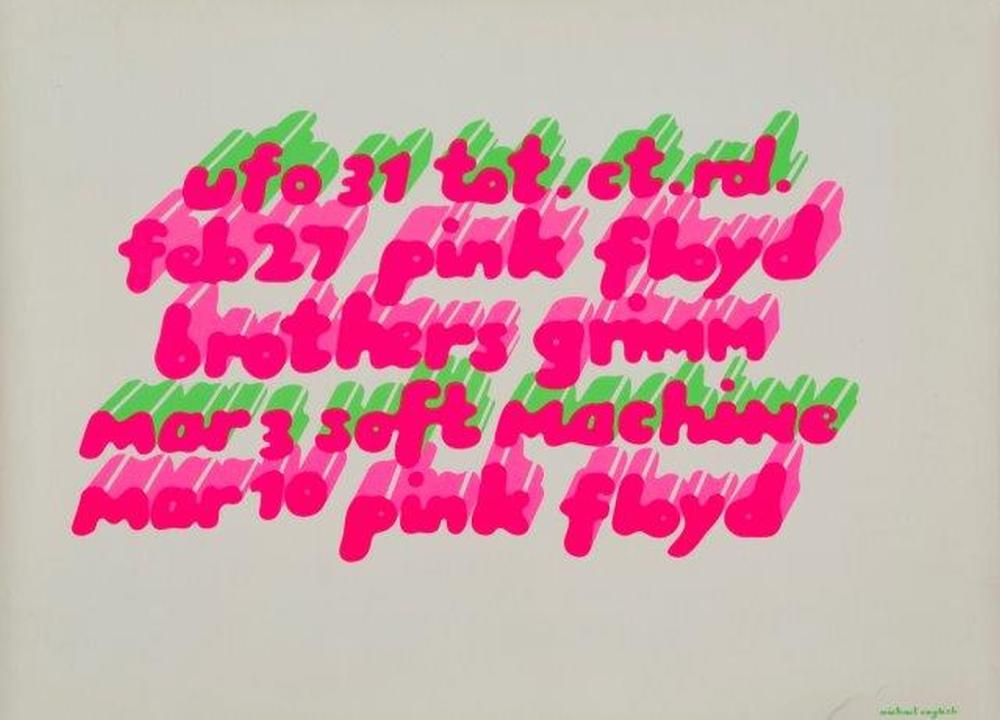
The website of Houston Freeburg Collection website quoted Nigel Waymouth’s description of his collaboration with Michael English:
Michael’s talent lies in his ability to balance an unrivaled attention to detail whilst creating the most fluid designs. I brought to the work a strong imagination bursting with romantic ideas and a facility for figurative drawing. We also had a very strong sense of colour, which was important , given the cost limitations and the strictures of the silk screen process. At a time when the prevailing fashion was for an indiscriminate use of rainbows and any clashing colour combination, we strived for maximum colour effect without sacrificing balance or harmony.
To this end we introduced numerous innovations that have since become common practice. Expensive gold and silver inks had not been used much on street posters before we made it a regular feature of our designs. We also pioneered the technique of gradating from one colour to another on a single separation. The effects were startling, bringing an explosive vitality to the fly posters on the London streets. Nothing like it had been seen before or since. Looking at a whole block of some twenty or thirty of a single Hapshash poster was a powerful visual shock. It was not long before people began tearing some of them down in order to decorate their own walls. It was eye candy to match any psychedelic experience. In hindsight we now realize that what we had done was to bridge a gap between Pop Art and tagged graffiti.
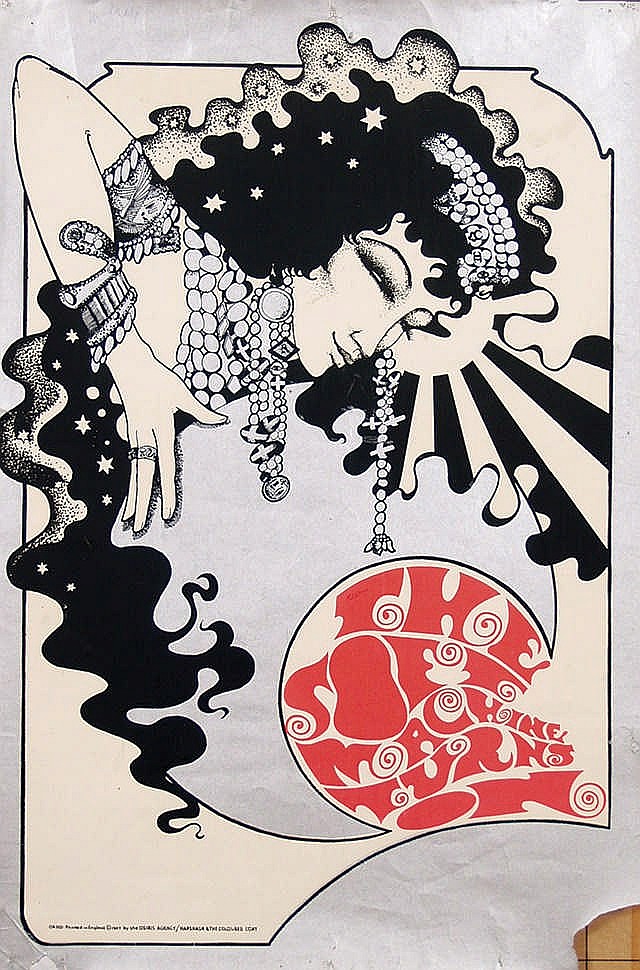
The posters often contained subversive elements, including sexually explicit graphics, mystical symbols and dissenting messages. We regarded each poster, whatever it was promoting, not only as an aesthetically pleasing design but also as a proactive concept. We got away with it because the posters were so charming to look at and the contents, including the words, required closer attention than people could give them at first glance. Our immediate audience was the younger generation, sympathetic to the spirit of the times but we also wanted to brighten the lives of people going about there everyday business on the gray streets of London.
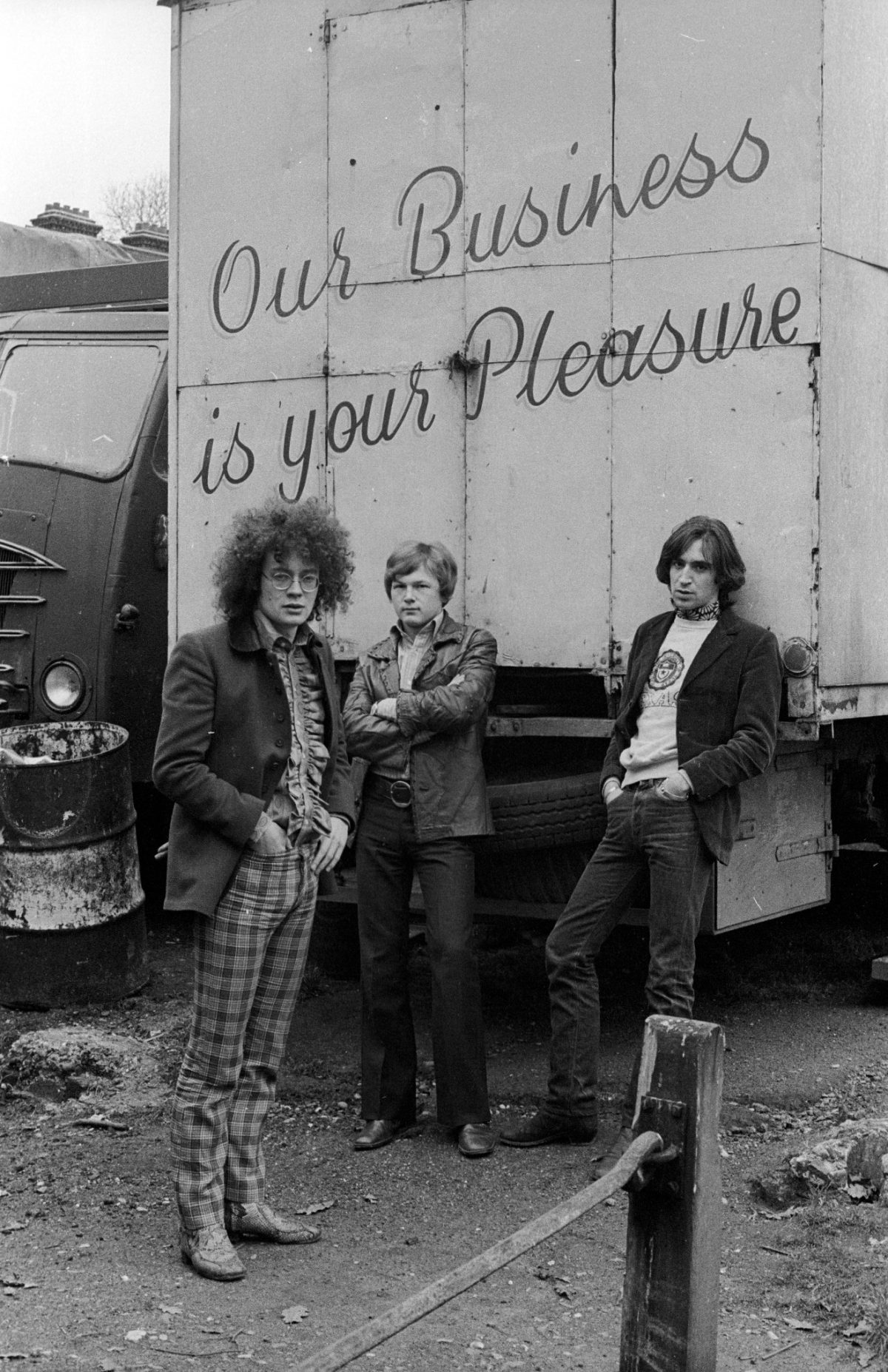
Hapshash and the Coloured Coat
“We were designing in a period of time when people were starting to look for alternative spiritual guidance, to make a definitive break from British conservatism and the Church of England. People were inquisitive, and we were finding things out for the first time – [and] we reflected that need of wanting to understand… in our designs.”– Nigel Waymouth
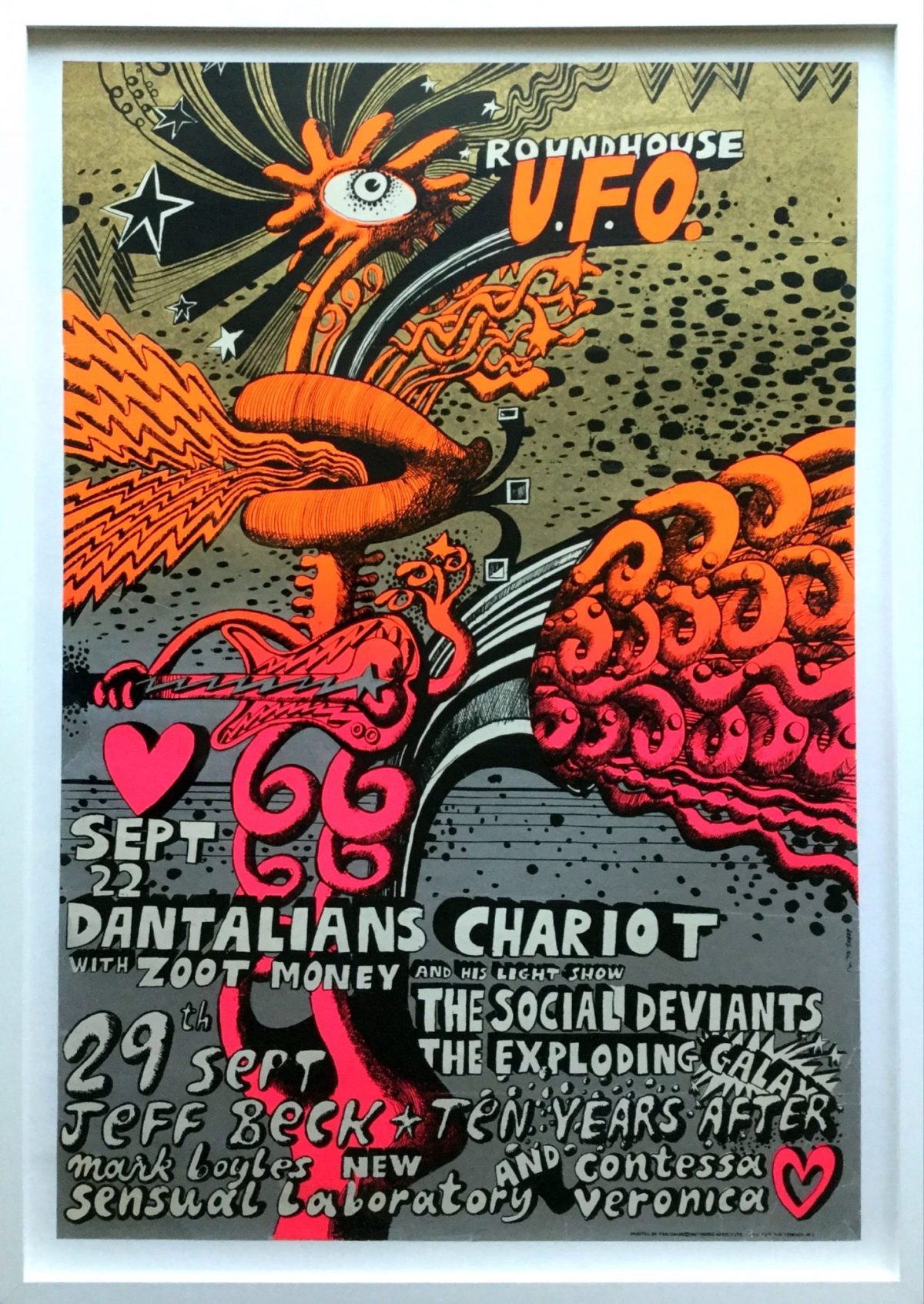
“It wasn’t so much a fascination as a wanting to embrace and understand something new,” explains Waymouth. “We were designing in a period of time when people were starting to look for alternative spiritual guidance, to make a definitive break from British conservatism and the Church of England. People were inquisitive, and we were finding things out for the first time – [and] we reflected that need of wanting to understand… in our designs.”– Nigel Waymouth
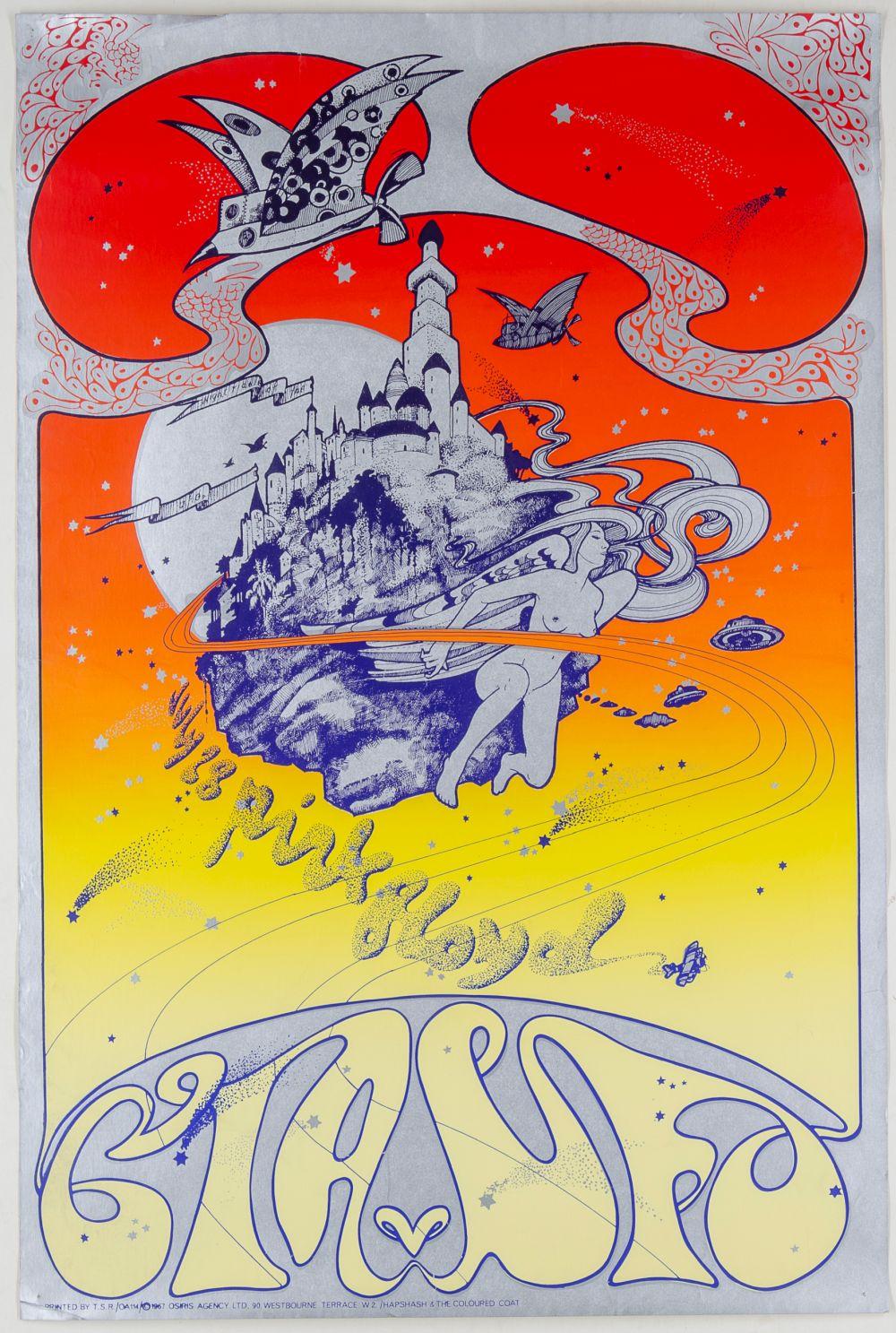
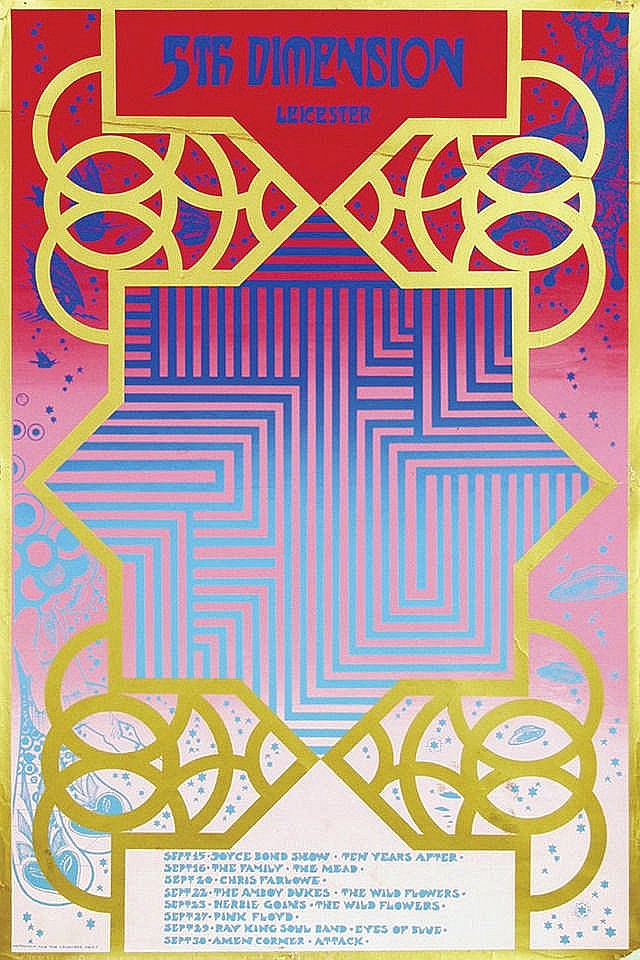
5th Dimension Club Leicester – 53×78, 1967 by Hapshash and the Coloured Coat. Via
Hapshash made their own music, collaborating with Spooky Tooth, Brian Jones, Amanda Lear, and Granny Takes a Trip co-owner John Pearse and Mike Batt.
The UFO closed in October 1967, after only being open less than a year. It was not financially successful, and Hoppy had his own legal problems to cope with thanks to an arrest for possessing cannabis in July. The hippie trail then diverted to other like-minded clubs like Happening 44 or the Middle Earth Club in Covent Garden.
Would you like to support Flashbak?
Please consider making a donation to our site. We don't want to rely on ads to bring you the best of visual culture. You can also support us by signing up to our Mailing List. And you can also follow us on Facebook, Instagram and Twitter. For great art and culture delivered to your door, visit our shop.



